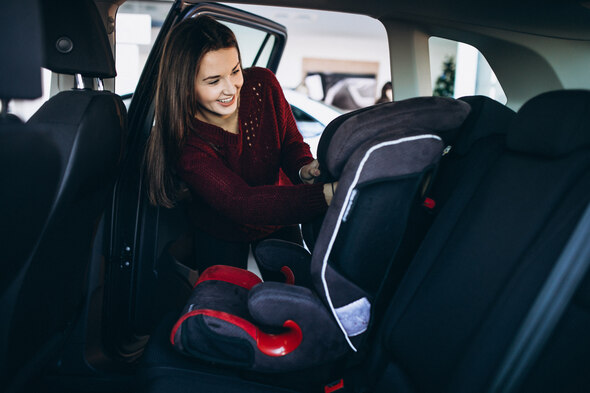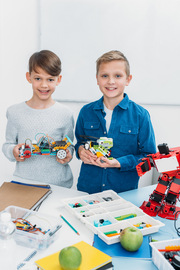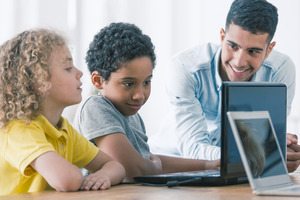Here Are 6 Changes Your Car Needs When You Have A Child
When you and your partner are expecting a baby, numerous changes will take place in your life. You’ll need to baby-proof your house, buy new clothes and items for the incoming infant, as well as the need to make significant adjustments to your daily routine.
But these changes don’t end inside the home. Having a child also means making changes to your car to make travelling easy with a baby in tow.
You don’t necessarily need to buy a new car. You just have to make installations and improvements to accommodate the needs and safety of your child. Childproofing your car ensures your child is comfortable when you take them on a quick drive or road trip.
Have Car Seat
The car seat is the first item you need to install in your car. Choosing from numerous types, designs, and colours can be endless and overwhelming, especially for first-time parents.
You must remember that when choosing a car seat, you must consider what is appropriate for your child. Consider your child’s weight, height, and age. If you’re looking for a car seat 0 to 8 years old appropriate, a convertible car seat, a convertible booster seat, or unharnessed booster seat are the best options.
These three types of car seats are the most popular among parents:
- A convertible car seat is suitable for newborns up to 4 years old. It is used in a rear-facing position for infants and a forward-facing position for children.
- A convertible booster seat is suitable for a six-month-old baby up to eight years old child. It can be used forward-facing with a five-point harness or as a booster seat.
- Unharnessed booster seat children are used by 4 to 8 years old children. It is suitable for children who have outgrown the convertible booster seat.

Place Cargo Carrier
Adding a cargo carrier to your car’s roof is a smart decision when you become a parent. Travelling with a child means bringing multiple things. These include a bag containing nappies, milk bottles, clothes, toys, and a baby stroller.
Most baby strollers usually do not fit inside the car or the trunk. Some even consume a lot of space, even when folded, have wheels, and have quite a wide dimension. Having a cargo carrier on the car’s roof means you can tie the baby stroller and bring it where you’ll be going.
Install Dash and Backup Camera
Installing a dash and backup camera records the activities happening outside your car. Backup cameras are beneficial when you’re parking. It helps you see animals or obstacles that your blind spot obstructs. This ensures a smooth parking experience for your child, free from bumps and unending car rotations.
A dash camera also ensures your and your child’s safety on the road. When driving, you can only control your speed and driving skills. You can’t control and don’t know how people around you will drive.
The dash camera records the roads where you’re cruising along, your car’s movements, as well as the cars in front of you, and could come in handy for security purposes in case you’re involved in an accident.
Change Car Bulbs
It’s also time to change the bulbs not only in the car lights outside but also the lights inside the car. Installing new bulbs for the car lights lets you see the road clearly. You’ll be able to spot incoming vehicles on the other side and the people or bicycles you’ll pass by. This helps ensure you and your child come home in one piece.
Chasing the light inside the car is also beneficial. It would be easier to locate nappies, milk bottles, or toys inside your baby bag when the light inside that car is bright. You’ll be able to easily spot things since you can clearly see where they’re located.
Add Window Deflectors
Using window deflectors lets you and your child feel and enjoy fresh air regardless of the weather. It keeps the windows cracked when it’s raining and deflects the sun away from your and your child’s eyes on a scorching day. Window deflectors also reduce interior wind noise, heat, and fog.
GPS Tracker
A GPS tracker in the car helps you track where you have been. This is a precaution in case you leave something important like a document or the baby stroller somewhere. Tracing your steps with a GPS tracker and retrieving the lost item would be easier.
It also helps in theft and robbery protection. When you have this installed in your car, you can connect it to your phone and check if your car is still where you parked it. You can easily report to the police authorities the location of your stolen car as manifested in your phone.
Final Thoughts
For parents, updating car features is a must for child safety. This means installing a car seat, changing the car bulbs, and placing a cargo carrier. It also means adding the window deflectors, installing the dash and backup camera, and getting the GPS tracker for easier and safer driving. These are made to ensure your child’s well-being is taken care of. This is your reality, and your child’s comfort is now your top priority.



 Katie Brenneman is a passionate writer specializing in education, mental health, family lifestyle and online safety. When she isn’t writing, you can find her with her nose buried in a book or hiking with her dog, Charlie. You can follow her on
Katie Brenneman is a passionate writer specializing in education, mental health, family lifestyle and online safety. When she isn’t writing, you can find her with her nose buried in a book or hiking with her dog, Charlie. You can follow her on 




 Explore the Safe Search Engine -
Explore the Safe Search Engine -